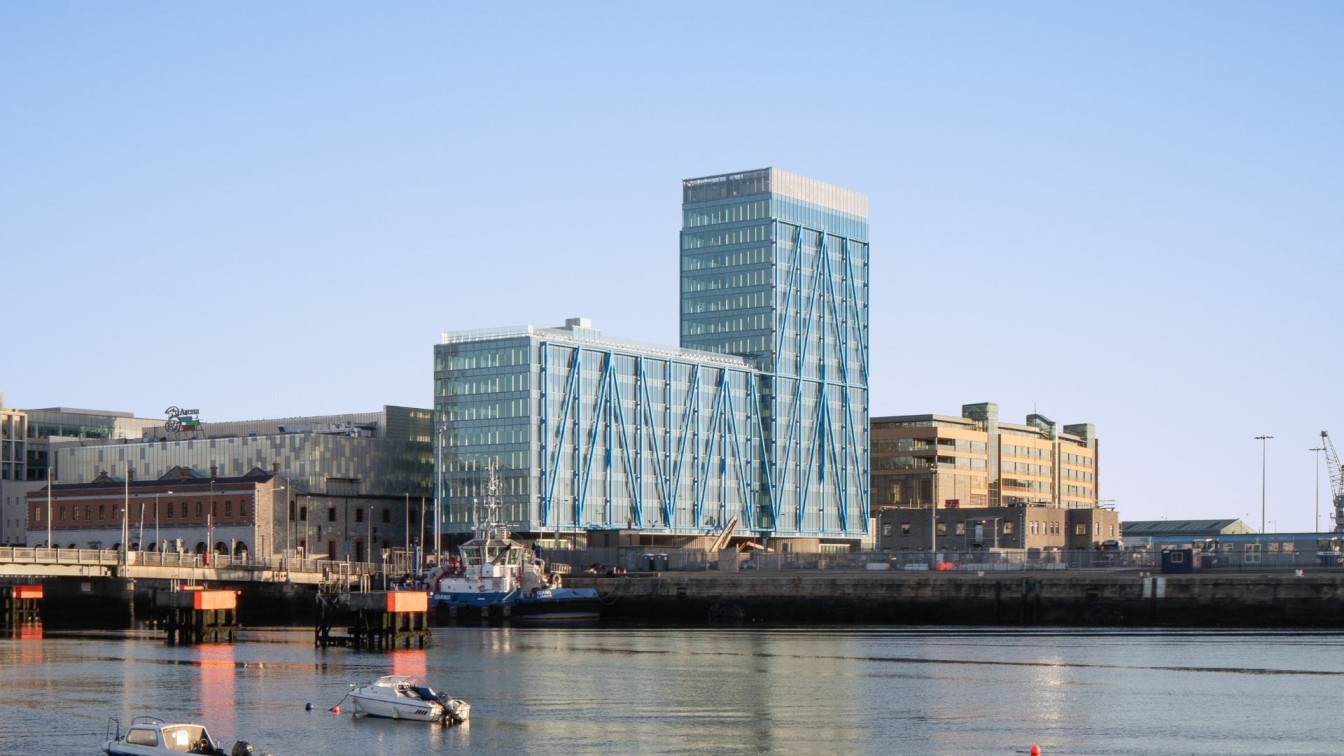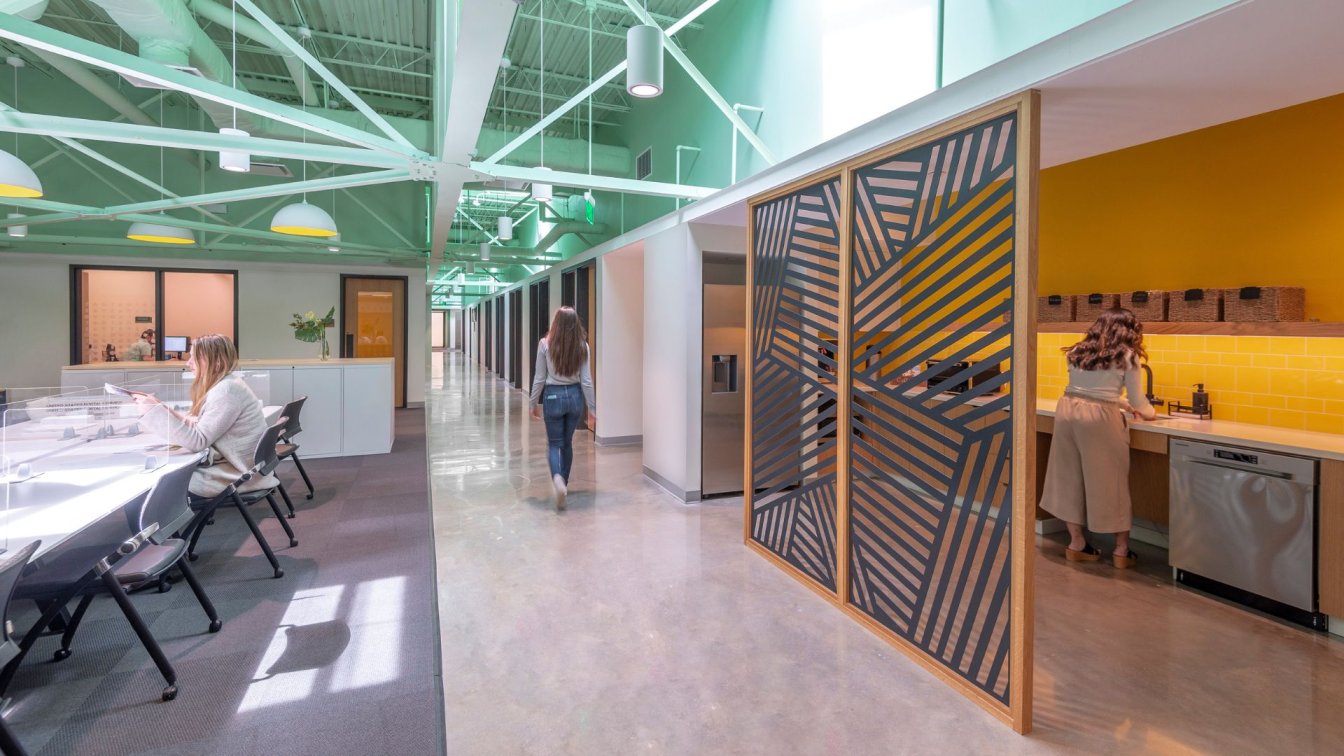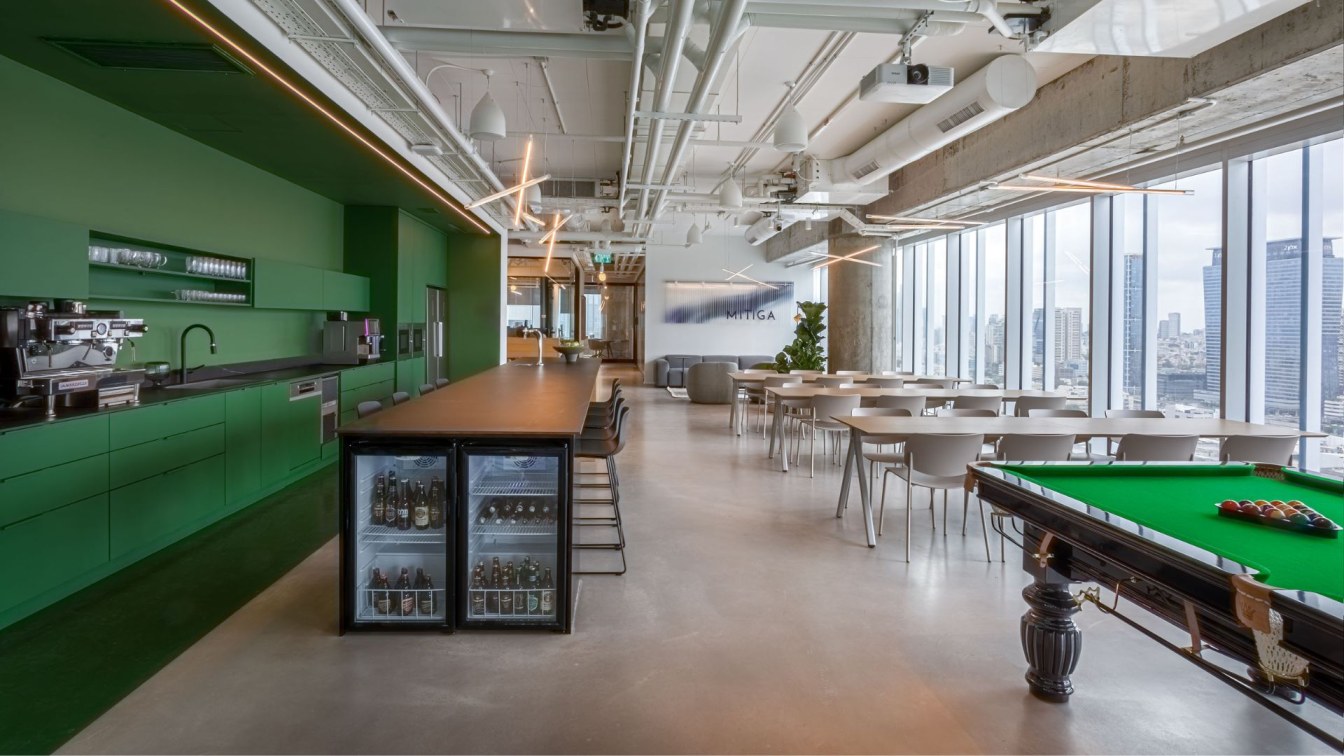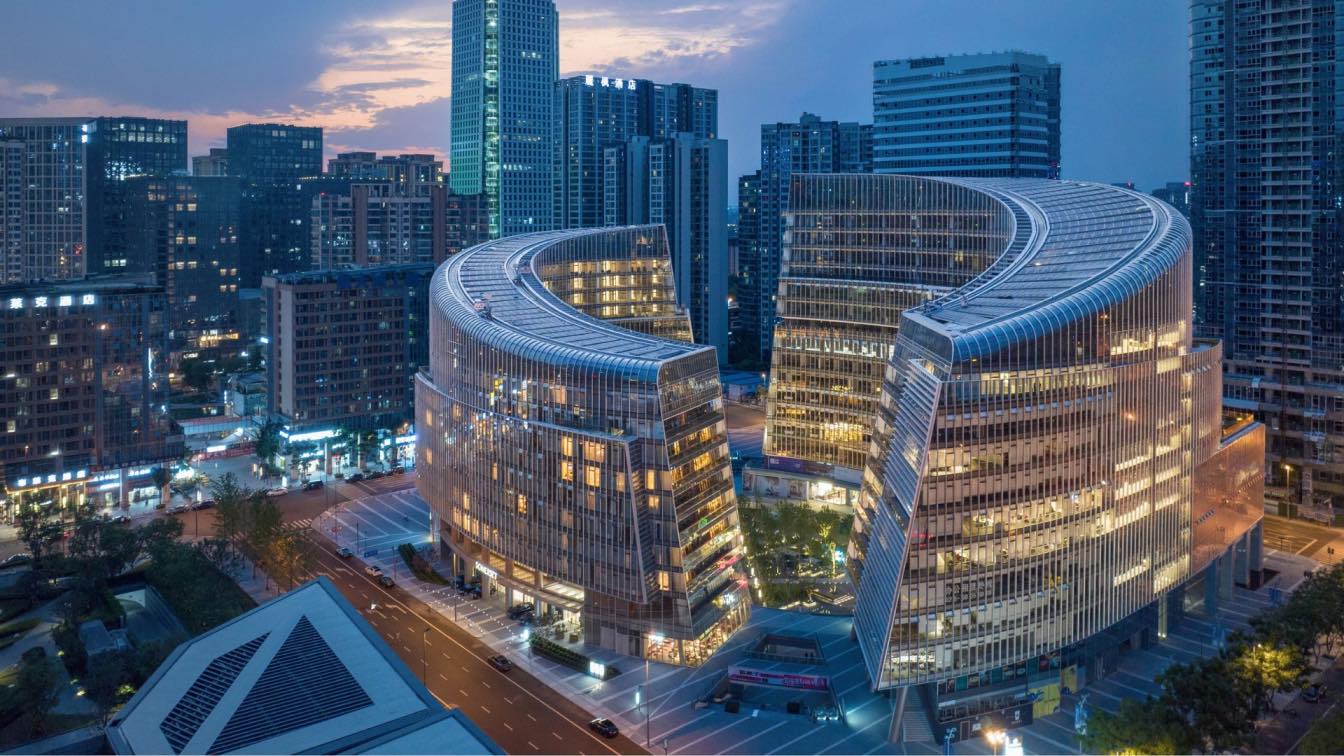The landmark EXO building by Shay Cleary Architects is the tallest commercial office building in Ireland. A unique engineering challenge, the building features a distinctive and highly innovative external exo-skeleton which forms the main structure, leaving a predominantly column free floor plate and referencing the iconic blue gantries of the Dublin docklands. The building features an extensive 1,000m2 landscaped roof garden to which all tenants have access.
Its pristine form responds to its unique location adjacent to the 3Arena, extending the public realm at ground floor under and around the structure. A highly sustainable commercial development, it was the first building project in Europe to achieve LEED V3 Platinum certification ahead of practical completion.
As an iconic piece of contemporary commercial architecture and the tallest commercial building in Ireland, the building has already become a new urban marker in the developing Dublin docklands area.
Shay Cleary Architects were appointed in 2015 to carry out this project following an invited competition in late 2014. The brief was to provide a large commercial office building on a prominent site in Dublin Docklands within the North Docks Strategic Development Zone (SDZ)
The site, a long narrow plot between the 3 Arena (formerly the Point Depot) and East Wall Road is a strategic one in that it marks a boundary between the traditional city and the port, and would also be delivering the final element in the formation of Point Square. In addition, the site addresses the northern end of the East Link Bridge which crosses the Liffey at this location. The SDZ provided the opportunity for a landmark tall building at Point Square.
The square is a significant new public space in the city which has been in incremental development for a number of years. It is addressed by the 3 Arena, a major concert venue, Point Village, which is a large Shopping Centre and Office Building complex, The Gibson Hotel and more recently at its western end by a Student Accommodation block and an Aparthotel. The red line Luas currently terminates at Point Square but may in the future carry onwards across the square, turn south on East Wall Road, cross the river, and continue eastwards to the Poolbeg Peninsula. The project also had to allow for this possibility.
Given the above, these exceptional and unique challenges and opportunities had to be fully embraced. Our aspiration was to provide a large commercial building with a world class working environment for potentially 2000 people, while also addressing significant urban design opportunities, forming a city edge and city marker relating to Point Square, the Port and the City. Our aim was also to embrace and amplify the areas character and ambiance through use of Point Square as both a traditional public space, but also as a frequent gathering place for up to thirteen thousand people attending major concert and music events. The complexity and significant potential of this unique set of circumstances formed the starting point for the development of the scheme.
The building takes the form of an elevated beam of accommodation which rises from eight storeys at its southern end addressing the Liffey Quays to seventeen storeys where it addresses Point Square. It is set back on its river frontage in deference to the fine three storey protected front building and flank of the original Point Depot. It therefore simultaneously responds to the context of the river front while also creating an urban marker for the new public space of Point Square.
This form is further manipulated to recognise the complexity of the square in use, by being raised seven meters above the ground thus allowing the public realm to flow freely beneath. In this way the building acts as a permeable filter and not an obstacle to movement on the eastern side of the square adjacent to the main 3 Arena entrance. The building therefore fulfils a number of formal and functional aims in that it is both an elevated highly sophisticated workspace ‘warehouse’, while simultaneously acting as a frequent gathering place, shelter, an underbelly, and a place of exchange and social interaction for very large numbers of people. It becomes at those particular times the public threshold to the 3 Arena. At the northern end of the site, a triple height free standing glazed cubic building for future retail/hospitality use completes the arrangement to the square. If the Luas light rail extension becomes a reality, it will pass between the two buildings.
The language and aesthetic of the building arose primarily from the wish to embed the building in its context by referring to the iconography and expressed structural elements of the blue cranes and gantries, which are emblematic of the docklands. This constructivist approach sought to give the building a memorable individual identity appropriate to its particular context. Two mega trusses flank the building volume and provide the primary exoskeleton support for beams that traverse the width of the building. These trusses are supported on each side at just three positions, which are located at the midpoint of the elliptical mega columns. The glazed facade is a unitised panel system with projecting mullions which give it a strong rhythmic quality. It becomes a silver plane as backdrop to the blue trusses when viewed obliquely.
The building is 20m wide and 112m long. A typical floorplate is 18m wide and there are three cores serving the accommodation. Because of the linear plan configuration, there are spectacular panoramic views of the Port and the City from the office floorplates. The largest core is at the northern end serving the seventeen-storey element. At ground floor there is a glazed entrance foyer addressing Point Square. At the southern end a second core and entrance foyer looking towards the river serves that end of the building. A third core dedicated to escape and service elements is located at the midpoint of the plan.
This flexible arrangement allows for multiple tenancy and occupancy options which can be delivered dependent on market and tenancy requirements. The cores are rectangular at upper floors but become elliptical in form when they appear below the suspended soffit.
Essentially, the building is supported on three elliptical mega columns coincident with the three points of support of the main truss structures. The lower seven storey element has a communal landscaped roof garden as an amenity for the building’s occupants. At its northern end the building has a small linking basement which connects it to the existing multi-level basement of the abandoned Watchtower project, to provide car and bike parking and end of trip facilities for the building occupants.
In summary the building provides a high-quality, unique working environment, completes and enhances Point Square, marks this major new public space within the wider city, and provides a new dynamic city gathering place for large numbers of people.


























